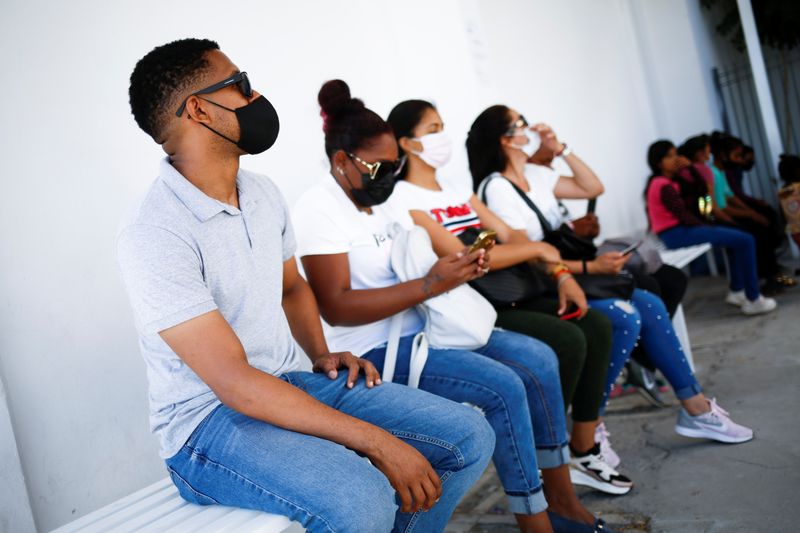By Dave Sherwood
HAVANA – The number of Cubans leaving their homeland has soared in recent months. The migration, often via irregular and dangerous routes over land and sea, has sparked new tensions between the island´s communist-run government and the United States, the principal destination for Cuban migrants.
The long-time adversaries held high-level talks focused on the crisis for the first time in four years in April.
WHY ARE SO MANY CUBANS LEAVING THE ISLAND?
In November, Nicaragua, a close political ally of Cuba, waived its visa requirement for Cubans, saying the move was intended to promote commercial exchange, tourism and humanitarian family relations.
But among Cubans, a flight to Nicaragua is now seen as the path of least resistance for those seeking to escape a grinding economic crisis on the island that has led to food and medicine shortages and last July, the largest anti-government protests since Cuban leader Fidel Castro´s 1959 revolution.
The coronavirus pandemic and tightened U.S. sanctions under former president Donald Trump have aggravated that crisis, contributing to the clamor to leave the island.
From Nicaragua, many Cubans head north for the U.S.-Mexico border where they try to cross illegally or seek asylum.
HOW DOES THIS EXODUS COMPARE TO PREVIOUS WAVES OF MIGRATION OUT OF CUBA?
Nearly 80,000 Cubans have been apprehended at the U.S. border with Mexico in the six months since October 2021. In March alone, more than 32,000 Cubans were picked up, nearly twice that of the previous month, according to U.S. Customs and Border Protection statistics.
If that rate holds, the current, Nicaragua-driven migration would outpace that of the 1980 Mariel boatlift, when Castro opened Cuba´s ports to U.S. vessels and an estimated 125,000 people left the island.
An increasing number of migrants are also leaving Cuba by sea in boats and rafts, risking hypothermia, shark attack and drowning, U.S. Coast Guard data show, though still many fewer than via Nicaragua.
HOW HAS THE UNITED STATES RESPONDED TO THE ARRIVAL OF SO MANY CUBANS?
The United States has long given preferential treatment to Cuban migrants arriving at its border, a vestige of Cold War-era policy when communist Cuba was closely allied with the U.S. arch-rival the Soviet Union.
Even today, few Cubans, once across the border in Mexico, are turned back, U.S. statistics show.
The Biden administration, however, has recently said it is working with regional allies to stem rising numbers of migrants arriving at its southern border, including Cubans.
Costa Rica, the Dominican Republic and Panama have all recently implemented or announced measures requiring “transit” visas for Cubans passing through their airports en route to Nicaragua, incensing Cubans who saw their travel plans frustrated. Those affected have protested at embassies across Havana.
ARE THERE AGREEMENTS BETWEEN THE UNITED STATES AND CUBA THAT GOVERN MIGRATION POLICY?
Yes, in 1984, 1994 and 1995 and 2017. Those agreements remain in effect but were modified under former U.S. President Barack Obama in January 2017. That accord commits the United States to “ensuring legal migration from the Republic of Cuba with a minimum of 20,000 persons annually.”
The United States, which scaled back embassy staff in Havana following unexplained health incidents in 2017, has since fallen far short of that commitment but has promised to speed visa processing overall for Cubans and resume some consular services in Havana in May.
The same 2017 agreement commits Cuba to “receive back all Cuban nationals…found…to have tried to irregularly enter or remain in that country in violation of United States law.”
The Cuban government has not accepted deportations of Cuban nationals via charter or commercial flight from the U.S. for at least six months, a U.S. government source with knowledge of the matter told Reuters.
ARE THE TWO SIDES WORKING TO RESOLVE THE CRISIS?
Both countries have painted the April high-level migration talks in a positive light, though they struck no firm agreements.
A senior Biden administration official called the conversations “the beginning of a good dialogue,” while Cuba´s foreign minister said they were, “without a doubt, a positive sign.”
(Reporting by Dave Sherwood in Havana, additional reporting by Ted Hesson in Washington; Editing by Alistair Bell)
